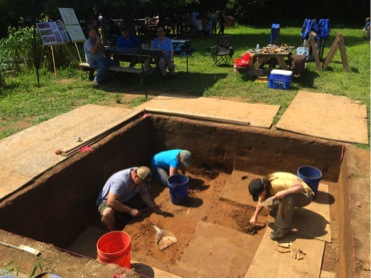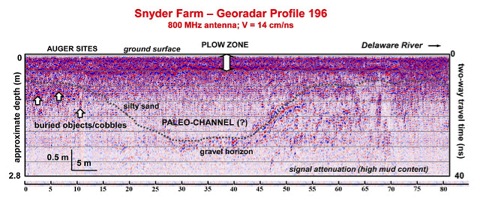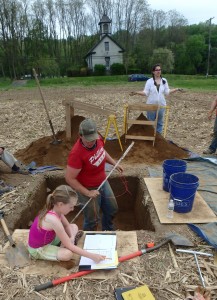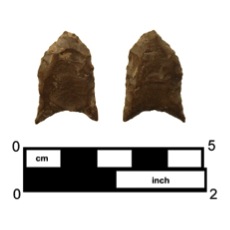Jennifer C. Rankin – Day of Archaeology, 2015
back to 2015 Day of Archaeology Index
See Past Days of Archaeology in Philadelphia (2014, 2013, 2012)
Back to PAF HOME
A ‘Day of Archaeology’, 2015: Snyder Site Complex, Phillipsburg, New Jersey
Jennifer C. Rankin — PhD Student at Temple University (Philadelphia, Pennsylvania, USA)
Archaeologist at AECOM (Pittsburgh, Pennsylvania, USA):
Snyder Site Complex webpage (www.snydersitecomplex.com)
This summer we began Temple University’s first season for geology/archaeology at the Snyder Site Complex in Phillipsburg, New Jersey. For the last few decades, over 30 fluted Paleoindian projectile points or bifaces have been reported from plowed/surface and buried contexts. While there are many Paleoindian sites in the area, most are exposed on the surface or plow zone. The Snyder Complex, along with two other localities (Shawnee-Minisink and Nesquehoning Creek Site), represent the only Paleoindian localities within buried/stratified contexts in the Delaware Valley.
While we are along halfway through the season, the excavations to-date have been very successful. At the end of June, we hit a stratified Late Paleoindian occupation with one fluted spearhead point, many scrapers and tools, and numerous pieces of flaked stone debitage. Even more, we identified a detailed environmental chronology before and after the Younger Dryas that will help us reconstruct the landscape from 13,000 years ago to present day. And much more remains for the rest of the summer and fall.
This week has been very busy and could not have been successful without the help of many volunteers, which include students from Temple/West Chester/Mercyhurst to retirees. At the beginning of the week, we entertained many visitors coming in to the Phillipsburg area for Thomas the Train Weekend. The Delaware River Railroad Excursions has a train stop right to the Snyder Farm. Not only did we reach out to folks from the NYC and Philly metro areas, we had many visitors from afar – most notably were families California, the South, Hong Kong and Germany.

Volunteers Dale Stone, Lisa MacIntyre and Emily Kokoll excavating a level dating to the Younger Dryas at the Snyder Site Complex
During the middle of the week, geomorphologist Dr. Frank Vento of Mercyhurst University stopped by to confirm our thoughts on the formation of the Snyder Site Complex. Last spring, Dr. R. Michael Stewart and myself placed a series of soil auger borings to characterize a generally broad, level-lying landform that is now a terrace of the Delaware River. What we have identified is that we were sitting on a now-buried landscape full of natural features often associated with floodplains and peri-glacial landforms, including evidence of overbanking, a migrating relict levee, backchannels/swales, flood chutes, and backswamp depressions (flood pooling). We also brought in ground penetrating radar (GPR) to see if we could further characterize these features and landforms. Check out the results of one of our transects in the figure to see an example of a paleo-channel or swale. I don’t want to give too much away as we will be presenting our results at this year’s Geological Society of America in Baltimore.

Results of GPR survey at the Snyder Site Complex by Temple University’s Department of Earth and Environmental Sciences (Dr. Ilya Buynevich and Logan Dunn)
This weekend, we are hosting a day for the Delaware Water Gap Native Youth Camp to visit the Snyder Site Complex. The Mohnican-Munsee-Delaware tribes will be sending their youth to help excavations and view/investigate some of the many landform features at the site complex, including a chert/flint geological formation. This visit is to expose the youth to career paths in environmental fields (such as archaeology, geology, and biology), while gaining a sense of identity and cultural knowledge.
If you are interested in learning more about the Snyder Site Complex or volunteering, please visit http://www.snydersitecomplex.com/
Read this contribution at the 2015 ‘Day of Archaeology’ International Blogging Project.
by admin

